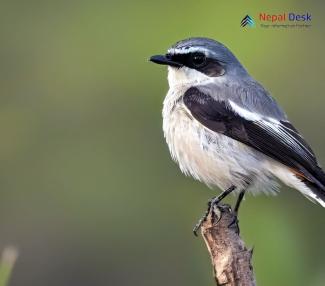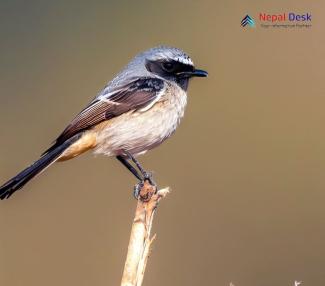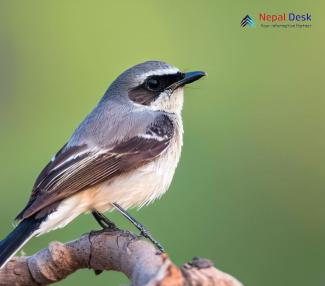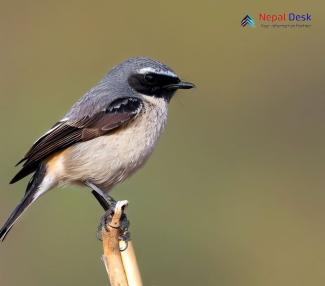Nepal, a country blessed with the majestic Himalayas, offers not only awe-inspiring landscapes but also serves as a haven for bird lovers and nature enthusiasts. Among the many bird species inhabiting this enchanting land, the Grey Bushchat (Saxicola ferreus) stands out due to its eye-catching plumage and intriguing behavior. In this article, we'll delve into the world of the Grey Bushchat and explore its distinctive habitat in Nepal.
A Symphony of Colors
The Grey Bushchat is a petite passerine bird that is part of the Old World flycatcher family and thrives primarily in subtropical or tropical environments. With a length of about 14-17 cm, these birds display noticeable sexual dimorphism in their coloration. Males exhibit a combination of grey, black, and white hues, whereas females bear shades of brown, buff, and pale underparts.
Enchanting Activity
Grey Bushchats can often be found dwelling in open areas like gardens, forest clearings, farmlands, or grassy hillsides as they search for insects – their main source of nourishment. Recognized for their remarkable agility, these birds typically perch on shrubs or low-lying branches while patiently awaiting their prey. Their captivating call is another notable feature; a melodious tune that echoes throughout forest paths.
Besides their hunting skills, Grey Bushchats are known for their fascinating territorial tendencies. Males are especially protective and frequently participate in aggressive interactions with rivals to defend their breeding territories. Throughout the breeding months (typically from April to September), they can be observed continuously singing from prominent perches, adding to the charm of the Nepalese countryside.
Discovering Grey Bushchats in Nepal
For those seeking an exceptional bird-watching adventure, Nepal provides ample opportunities to witness the Grey Bushchat in all its natural glory. Some favored locations to spot these alluring birds include Annapurna Conservation Area, Langtang National Park, and Chitwan National Park. Nepal's dedication to conservation and eco-tourism allows visitors to explore a diverse range of protected regions and wildlife sanctuaries, each with its own distinct collection of bird species.
In Conclusion
The Grey Bushchat is merely one illustration of the remarkable biodiversity that awaits you in Nepal. As you journey through the breathtaking landscapes and untouched ecosystems, encountering such marvelous creatures will undoubtedly fill you with an appreciation for the country's natural allure. So whether you're a passionate birdwatcher or simply a nature lover seeking an unforgettable escapade, allow the mesmerizing Grey Bushchat to lead you into the heart of Nepal's wild terrain.




